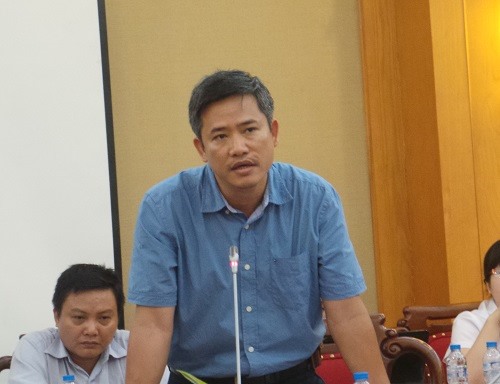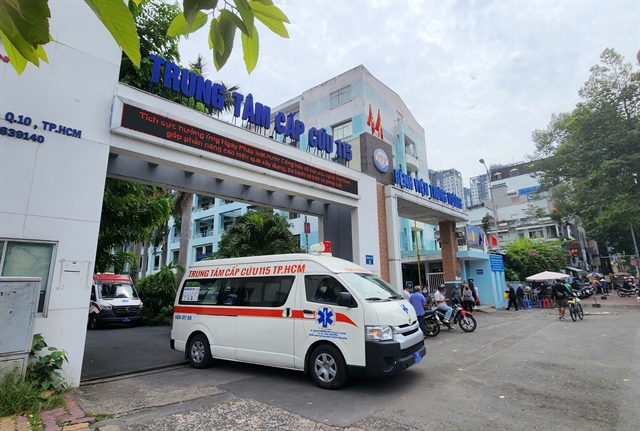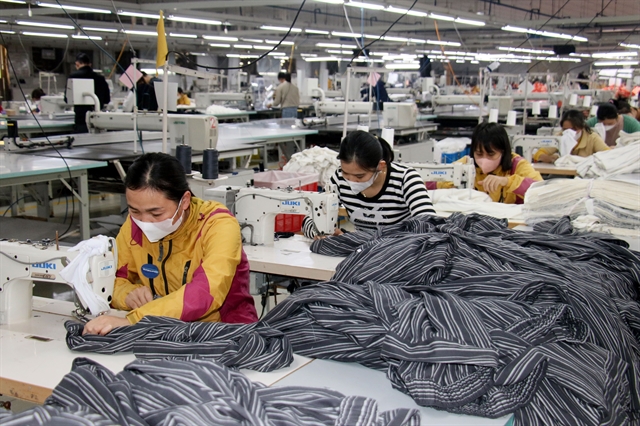 Economy
Economy

The Prime Minister has issued Directive (16/CT-TTg) on strengthening capacity to tackle challenges posed by the fourth industrial revolution (Industry 4.0).
 |
| Đàm Bạch Dương, head of High Technology Department |
The Prime Minister has issued Directive (16/CT-TTg) on strengthening capacity to tackle challenges posed by the fourth industrial revolution (Industry 4.0). Đàm Bạch Dương, head of the Hi-Technology Department, tells the Vietnam News Agency that technological, human resource, policy and infrastructure shortcomings stand in the way of Viet Nam building ‘smart’ factories.
What is the biggest difference between Industry 4.0 and the earlier revolutions?
So far, the world has had three industrial revolutions. The first industrial revolution followed the introduction of water- and steam-powered mechanical manufacturing facilities. The second was the introduction of electrically powered mass production, based on the division of labour. The third industrial revolution used electronics and IT to achieve further automation of manufacturing. The fourth industrial revolution is based on Cyber-Physical Systems.
The fourth revolution creates the “smart factory” by “impactful orchestration of emerging technologies including the Internet of Things, the Cloud, Analytics, Robotics, 3D printing and Artificial Intelligence.”
Industry 4.0 differs from the previous three revolutions in terms of speed, scale and scope. Industry 4.0 affects all sectors and all economies in the world. It will bring about major changes in productivity, scale and management model.
The previous industrial revolutions involved efficient use of energy, while the current industrial revolution will find out new energy sources and use them efficiently.
What are opportunities and challenges for Việt Nam vis-à-vis Industry 4.0?
As with other countries, Industry 4.0 presents both opportunities and challenges. However, I feel that for Việt Nam, it will bring more challenges than opportunities.
The opportunity is that as a newcomer, Việt Nam can save time, drawing from the experience of countries that have already developed sectors following Industry 4.0.
The country can also take advantage of the new industrial revolution to change its management and economic development models.
However, Việt Nam will be challenged most in the sectors of technology, human resource, policy and infrastructure.
The level of technology in Việt Nam is moderate and not synchronized, so it will be difficult to approach Industry 4.0.
Việt Nam’s workforce is not highly skilled and it will be hard to match the high level of scientific and technological levels of Industry 4.0. Meanwhile, Việt Nam must upgrade infrastructure to connect with the Industry 4.0.
Many experts have said that Industry 4.0 has absolutely no benefit for countries that currently have the advantage of cheap labour. Can you comment?
Human resource is key to Industry 4.0 success. Viet Nam has had a large, moderately educated workforce in the garment and electronics sectors. According to the International Labour Organisation (ILO), Việt Nam’s labour sector will be one of the most affected in the region. Specifically, 80 per cent of Việt Nam’s workforce could face the risk of unemployment. This is a serious challenge for the country.
Industry 4.0 will impact all economic sectors at different levels. The heaviest impact will be on sectors with large workforces, like the garment and electronics sectors. Increasing automation is going to be a big challenge for them.
However, Industry 4.0 will bring opportunities for other sectors like tourism. The tourism sector can use smart tourism and Internet of Things to generate more business opportunities.
What should Việt Nam do, in this situation?
Việt Nam needs to upgrade its IT infrastructure, Internet, and 4G and 5G bandwidth. It must review current policies and adapt them to Industry 4.0. Now, ministries and sectors have implemented policies related to Industry 4.0 and they need to get more actively in implementing them.
The nation needs policies to create an open business environment for creative enterprises and to consider enterprises as the centre of development.
It also must change policies on training human resources from high school to university, creating a highly qualified workforce that can adapt to Industry 4.0.
Now, many ministries have prepared carefully to develop such a workforce, including the Ministry of Industry and Trade, the State Bank of Việt Nam and the Ministry of Labour, Invalids and Social Affairs, while some other ministries are still studying the issue.
So, do you think Việt Nam’s policies, infrastructure and human resources can get ready for this revolution?
We’ve had many policies related to Industry 4.0. These include the State Bank of Việt Nam’s non-cash payment scheme, the digitalisation scheme of the Ministry of Information and Communication, the technology innovation programme of the Ministry of Science and Technology, and many others.
According to the Prime Minister’s Directive (16/CT-TTg), ministries and sectors will review and evaluate the current situation to develop suitable plans and strategies.
The Ministry of Science and Technology has been assigned the task of co-ordinating with ministries and sectors in implementing Directive 16-CT/TTg. Can you elaborate on this?
According to Directive 16, the Ministry of Science and Technology will continue to advance the development of start ups.It will also promote research and development as well as technological innovation through a national programme.
The ministry is also coordinating with several ministries, sectors and localities to pilot some models, including co-operating with Bắc Ninh to build smart cities and with Hà Nam Province to develop hi-tech agriculture regions. - VNS









